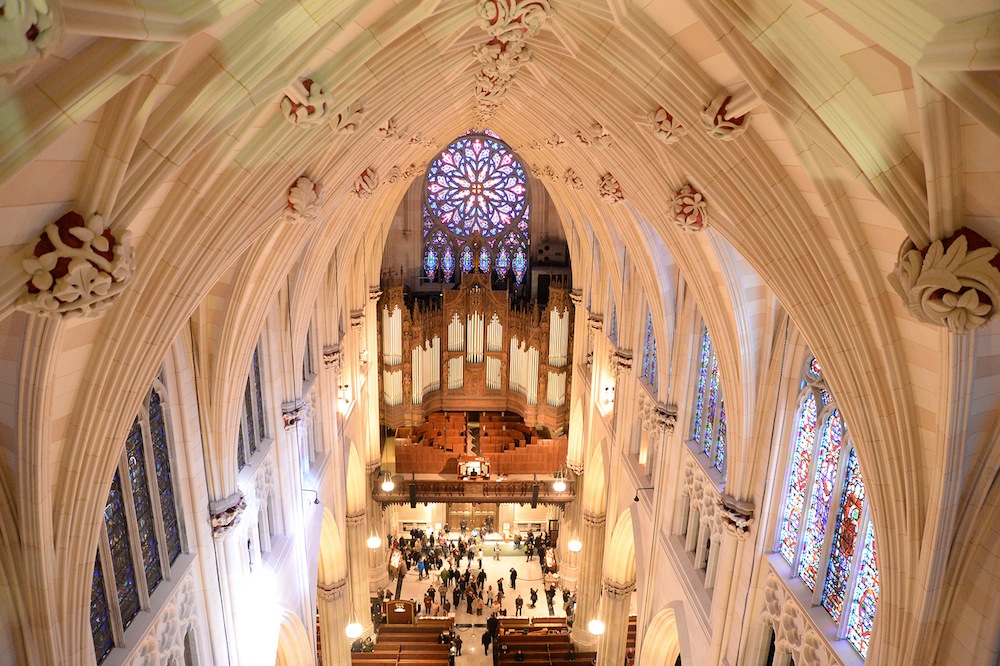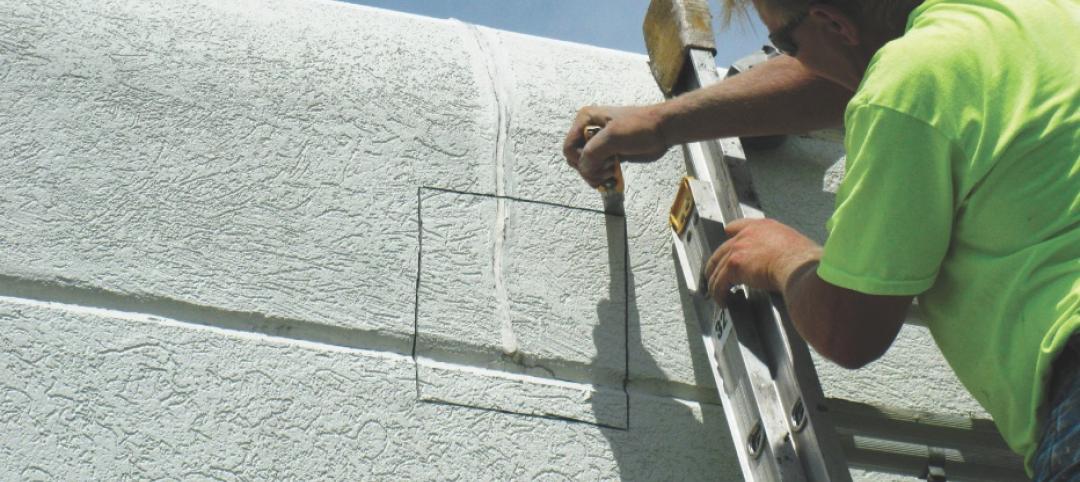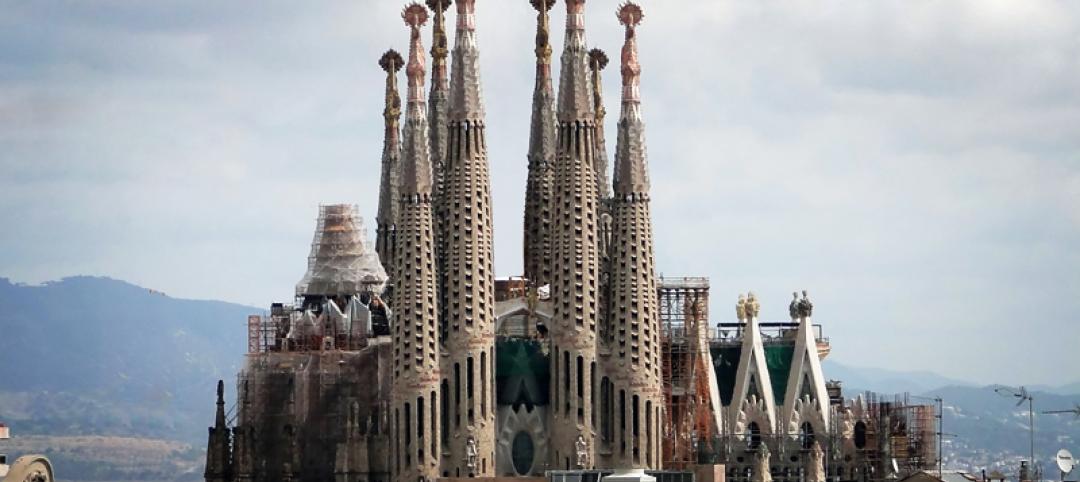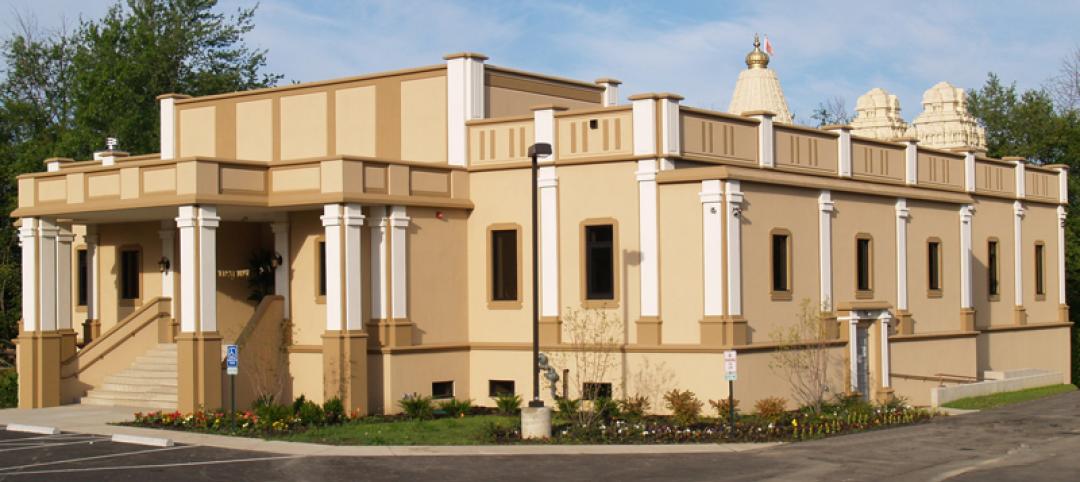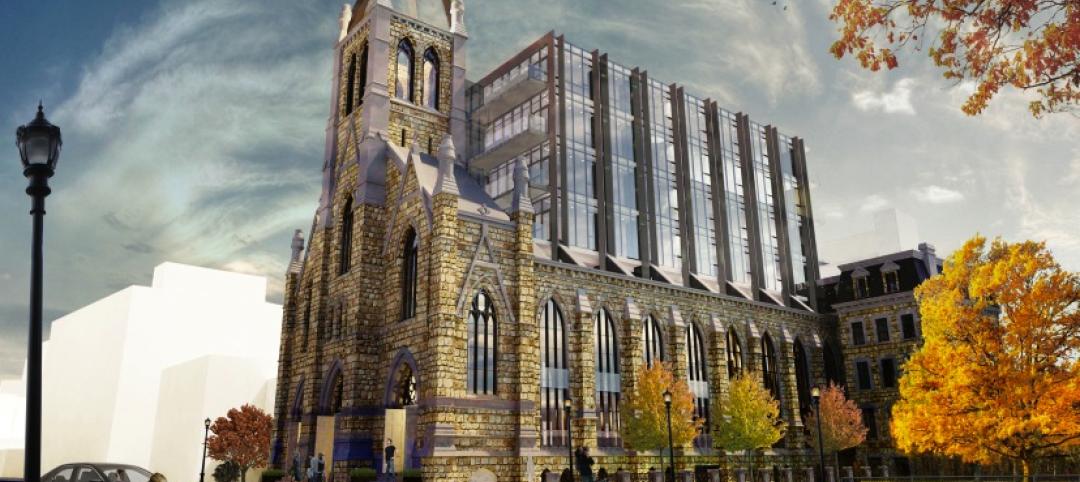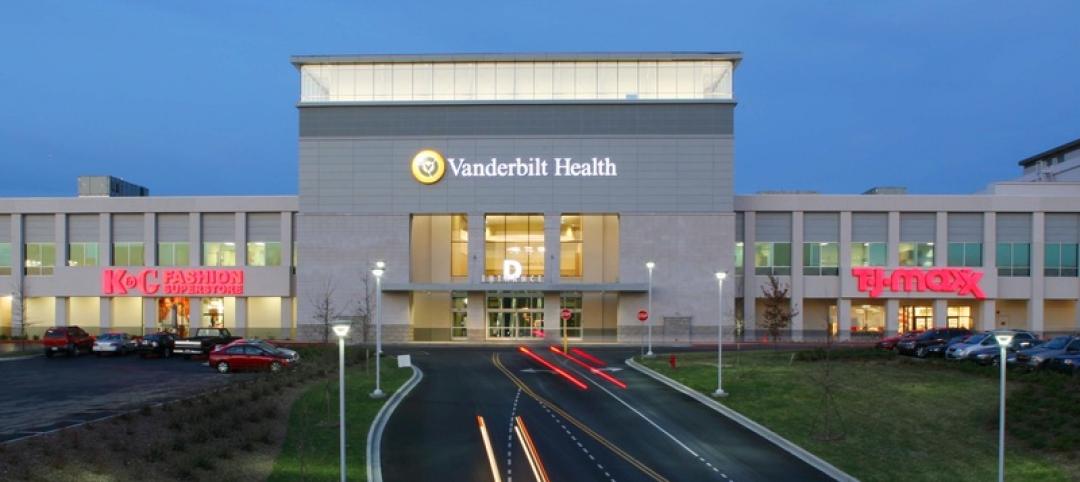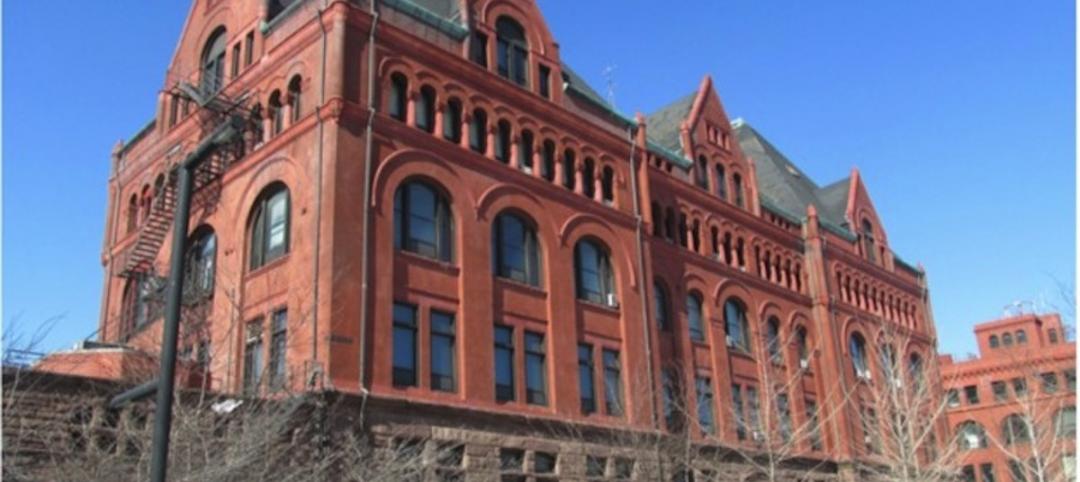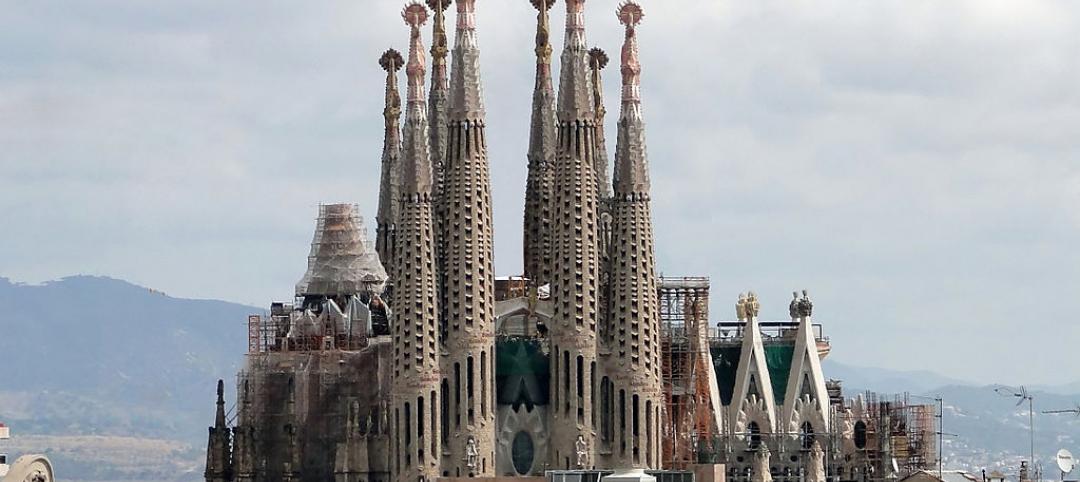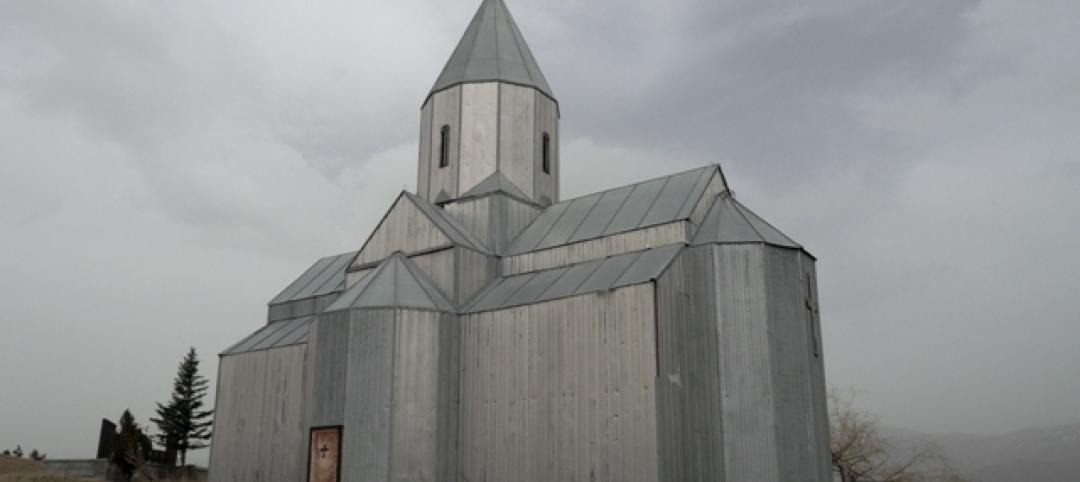Pope Francis is scheduled to visit New York City next month, and one of his stops will be the Cathedral of St. Patrick, where the Pontiff will lead an evening prayer service called Vespers on September 24.
Just in time for the Holy Father’s arrival, the neo-Gothic Roman Catholic Church and landmark in Manhattan will have completed a $177 million restoration, whose planning and reconstruction took nearly nine years. The complexity of this project required an unusually diverse array of consultants, from the Metropolitan Museum of Art to the New York Fire Department.
St. Patrick’s, which opened in 1888, had fallen into serious disrepair when, in 2006, Cardinal Edward Egan called for the building’s first major overhaul in 70 years. Murphy Burnham & Buttrick Architects developed a master plan that would allow the cathedral to stay open during the restoration.
A complex scaffolding system on a rolling platform moved down the cathedral’s interior nave in phases. That movement was coordinated, when possible, with exterior scaffolding to access stained glass windows from both sides and allow the Design team to review surfaces while the church was in use.
Autodesk’s BIM360 Field software managed this project, whose construction work got started in 2012 and included the tracking of more than 30,000 preservation treatments and repairs. This software also allows changes to the project’s scope to be communicated instantly to the Building Team.
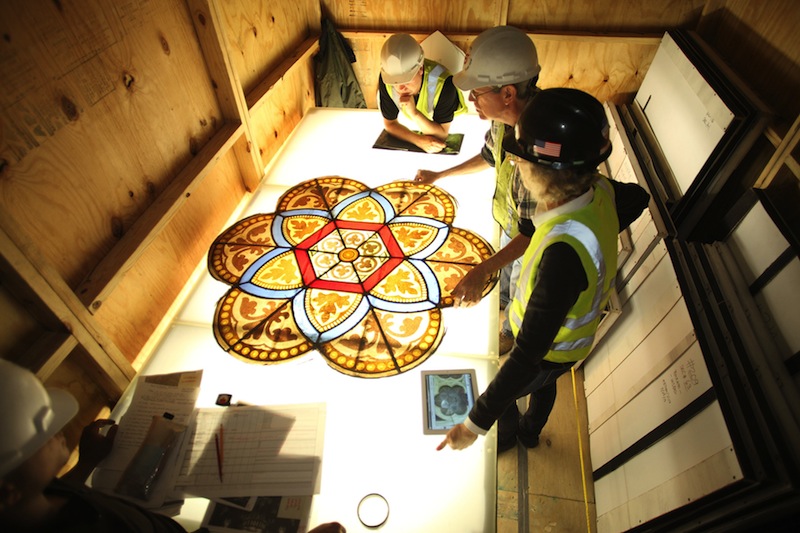
Every square inch of the exterior was cleaned and repaired, including the twin spires that rise 330 feet about street level. On the exterior, stone was cleaned using the Rotec system, a micro-abrasive technology of low-pressure water, air, and crushed glass. Copper stains were removed with a clay poultice that draws impurities from the stone. On the interior, the team used multiple applications of Arte Mundit, a chemical cleaning latex peel.
Seventy-five stained glass windows with 3,700 panels were cleaned and repaired, too. The team installed new transparent protective glazing with laminated UV filtering, which let in more light and mitigated heat.
Because there was no system for putting out a fire in the attic above the nave except for a single standpipe, it was clear that a blaze in the attic would be too dangerous for firefighters to extinguish. So the team installed a high-pressure mist system as an alternative to a conventional sprinkler system. The system uses nitrogen to propel a small fraction of the water a conventional sprinkler system uses, suppressing a fire in minutes.
All new MEP and electrical systems are installed, including a geothermal system that required drilling 10 wells of up to 2,200 feet deep into the bedrock along the north and south sides of the Cathedral, a feat considering the network of subways, plumbing, and infrastructure underground. The geothermal system is expected to provide a 30% energy savings and reduce greenhouse gas emissions by 94,000 kilograms annually.
The Building Team included Building Conservation Associates (Restoration Consultant), Landmark Facilities Group (MEP Engineer), Silman Associates (Structural Engineer), Langan (Geotechnical Engineer), Robin Key (Landscape Architecture), Jaffe Holden Acoustics, Aramark, Arup Fire, Barkley Studio, Cerami & Associates, William Dailey Code Consulting, Construction Specifications, Inc., Ducibella Venter & Santore, Eckersley O’Callaghan & Partners, Femenella & Associates, Fisher Marantz Stone, Mary Kay Judy, GB Geotechnics, Heintges & Associates, Northeast Energy Services, PW Grosser Consulting, Slocum Cost Consulting, and VDA Associates.
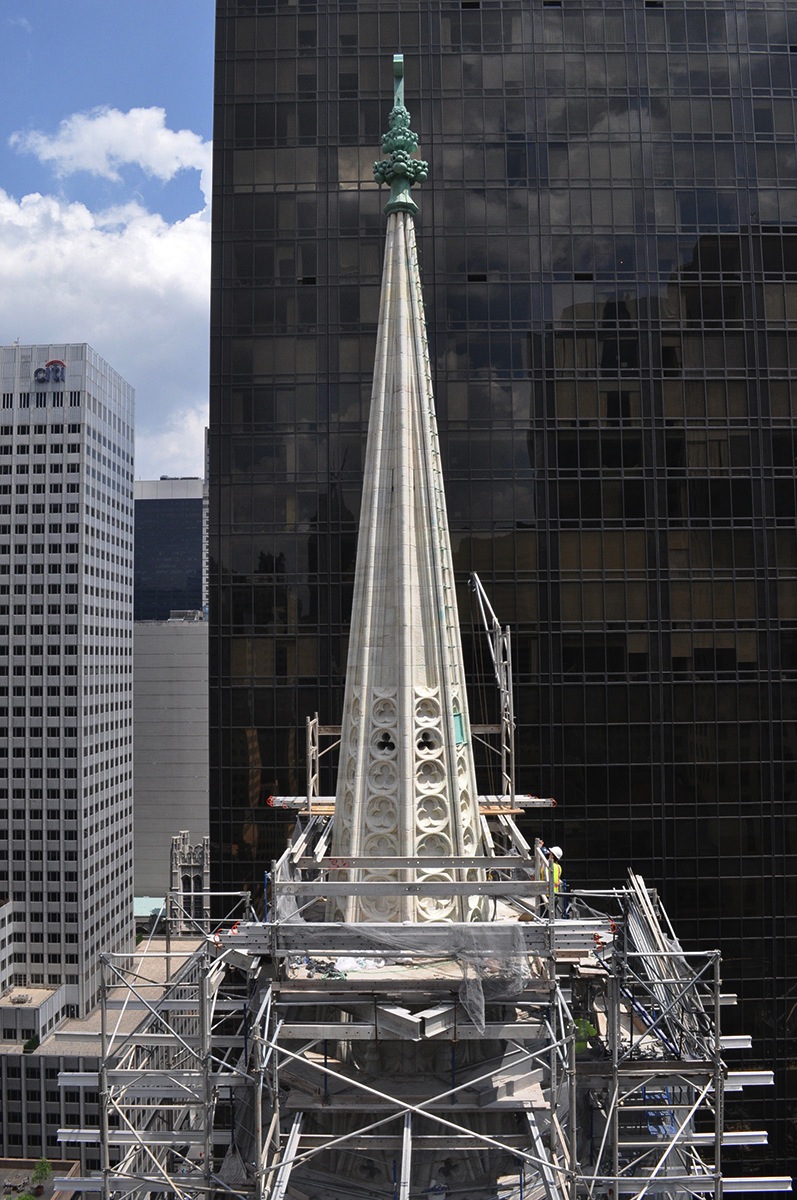
Related Stories
Architects | Jan 15, 2016
Best in Architecture: 18 projects named AIA Institute Honor Award winners
Morphosis' Perot Museum and Studio Gang's WMS Boathouse are among the projects to win AIA's highest honor for architecture.
| Jan 14, 2016
How to succeed with EIFS: exterior insulation and finish systems
This AIA CES Discovery course discusses the six elements of an EIFS wall assembly; common EIFS failures and how to prevent them; and EIFS and sustainability.
Religious Facilities | Oct 28, 2015
After 133 years of construction, Sagrada Familia enters final phase of construction
Six new towers to be added will make the cathedral Europe's tallest religious building.
Sponsored | Religious Facilities | Sep 25, 2015
Where Construction Meets Religion
The beliefs of the congregation required specific compass-orientations for certain rooms
Multifamily Housing | Apr 22, 2015
Condo developers covet churches for conversions
Former churches, many of which are sitting on prime urban real estate, are being converted into libraries, restaurants, and with greater frequency condominiums.
Religious Facilities | Mar 23, 2015
Is nothing sacred? Seattle church to become a restaurant and ballroom
A Seattle-based real estate developer plans to convert a historic downtown building, which for more than a century has served as a church sanctuary, into a restaurant with ballroom space.
Retail Centers | Mar 10, 2015
Retrofit projects give dying malls new purpose
Approximately one-third of the country’s 1,200 enclosed malls are dead or dying. The good news is that a sizable portion of that building stock is being repurposed.
Reconstruction & Renovation | Mar 5, 2015
Chicago's 7 most endangered properties
Preservation Chicago released its annual list of historic buildings that are at risk of being demolished or falling into decay.
Religious Facilities | Mar 3, 2015
Gaudi's Sagrada Familia to be completed in 2026
Architect Jordi Fauli has taken over responsibilities for finishing Antoni Gaudi's masterpiece. Fauli is confident his team will be able to finish the mega project within the next 12 years.
Sponsored | Metals | Feb 25, 2015
Why churches are being built of metal
Affordability and speed of building are important factors.


